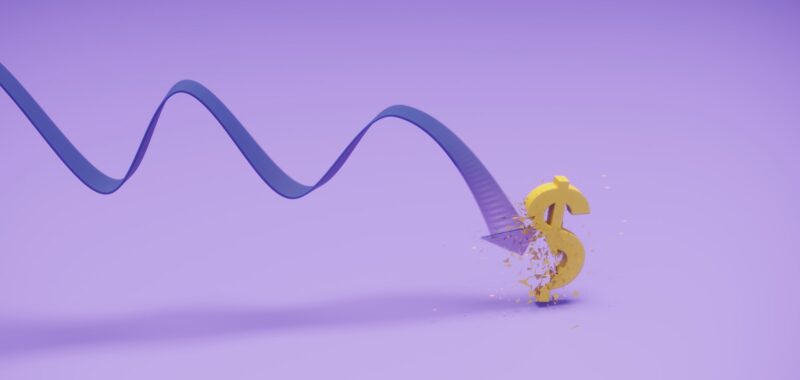Opinions expressed by Entrepreneur contributors are their own.
Prior to the industrial and technological revolutions, social mobility was a concept that colored the most ambitious, aspirational and fictitious tales. No matter the time or location, an individual’s social class was almost always irreversibly determined by the conditions and lineage they hailed from.
Following the Great Depression of the 1930s, our nation’s leaders dreamt of making America the ruler of all on the back of a stupidly simple yet compelling ideology – the American Dream. America vowed to be the land of opportunity where any individual could become whatever they aspired to be. No matter what. Social and vocational mobility pushed America to new heights — but most importantly — it set the stage for what would become decades of parabolic growth and the birth of the highly lucrative, meaningful entertainment, financial, and sports industries.
Fast forward a bit further, and to your surprise, you might mistake yourself for having gone into the past. In today’s post-American Dream world, many people operate within class constraints, similar to the 19th century. The realities that plague us today are inescapable: they’re embedded into poor monetary policy, a growing disdain from other world powers and the remnants of capitalism.
Our parabolic growth has not only paused, but it feels as though we have turned the clock back a few years. All that’s different is that we have things like the iPhone and Uber Eats. With the last few years of inflation, these luxuries have become readily accessible, while the cost of necessities like bills and rent have put the nation in a chokehold.
Related: Breaking the Bank: America’s Multi-Trillion Dollar Banking Problem
Damned if they do.. Damned if they don’t.
According to the Federal Reserve Bank of New York’s most recent Household Debt and Credit Report, Americans have more than $1.1 trillion of credit card debt. The days of due balances trending negative on the back of those ‘life-saving’ stimulus checks couldn’t be further behind us. All that’s left are today’s problems fueled by yesterday’s solutions.
Sure, it’s widely documented that COVID-19 relief reduced economic hardship; however, it can simultaneously be the case that those same checks could be partly responsible for the inevitable erosion of the Average Joe’s spending power – a prime example of how the powers that be aren’t immune to making poor, shortsighted decisions despite how critical it is for proper decisions to be made.
This, in combination with accelerating corporate layoffs, the everyday impact of debt servicing for auto and mortgage loans given tougher monetary policy, and much more, contributes to the reality that life feels unbeatable now.
- The Fed has made minimal progress on inflation despite higher interest rates
- Even higher rates would put the entire economy at risk of systemic failure
- Aggressive monetary policy might backfire and force the Fed to drastically pivot entirely and cut rates
While none of the above comes as a surprise to most, what’s been a growing concern is the uncertainty of what might happen should apathy and hopelessness overtake the overall sentiment of the American population. Utter chaos is likely to ensue should the average American realize that even the most prestigious jobs and degrees won’t afford us the lives we’ve spent decades working toward.
The value of a college degree plummeted in the span of a few short years following the pandemic while simultaneously having any material amount of debt became crippling. Sure, you’re ‘smarter’ than most, but the life that a college education affords you is no longer something to brag about.
Month-long excursions to Europe, luxury shopping sprees and tacky McMansions sound good on paper, but they are now more or less out of reach for the overwhelming majority (despite social media sometimes convincing us otherwise). That said, 2024 marks a new age of the new normal, although, ironically, this new normal is quite often the norm elsewhere.
Related: Why the American Dream is Dead
Conclusion
Life’s hard — it’s always been. However, it’s not meant to be this hard. Nor was there any real indication that the prosperous times of our past wouldn’t somehow find a way back to us again. What we’re experiencing now is the American Government‘s best effort to move the goalposts for what the American Dream entails. That way, the American machine can continue churning, given how challenging times are.
And for what it’s worth, even if Jerome Powell could halt inflation by waving a magic wand, do you think the elite would want that? Inflation is Average Joe’s worst enemy but the rich man’s best friend. On the way to becoming rich, poor people might have to pay 45% in capital gains tax or something, right? Again, the game’s impossible.
These are the virtually inescapable impacts of late-stage capitalism. Everyone’s highly skilled, well-connected, and looking for work, all while work is becoming increasingly difficult. All the while, everything’s getting more expensive. Perhaps the most difficult obstacle to overcome is consumerism. Our desire for more, our obsession with opulence in American culture, and how we can’t seem to escape it all due to our entrenchment in social media is deeply worrying.
I worry that we’re not too far from a world where the ‘no’s,’ ‘can’t do it’s,’ and ‘maybe next time’s’ start to become the norm. And yes, recessions and economic hardship are a necessary part of life; however, this is not that. This is a distinct shift in American history where many of the luxuries that motivated us to work in the first place slowly fall out of reach, and it’s only a matter of time before something truly breaks.

